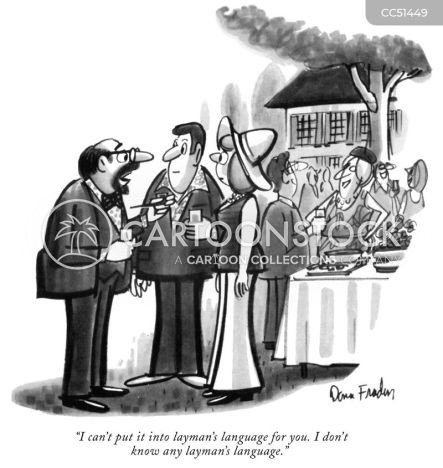Laughing and learning: Cartoons as powerful textbook teaching tools
Dear Valuable Textbook Authors,
No, this isn’t spamming! I honestly think what you do is very valuable. Transmitting the hard-earned knowledge in your fields of study to a new generation is the only way that kind of knowledge will continue to be accumulated for a better smarter world.
Really, I’m absolutely blown away by the smarts and dedication of anyone who writes a textbook. Even the definition of a textbook is daunting:
“A book used as a standard work for the study of a particular subject”. Wow, that is a high standard, and kudos to you who strive to meet it especially now when getting published is more challenging than ever.
There are already many textbooks on most subjects in the curriculum. It would be easier for publishers to just keep publishing the ones they already have, and probably some of you feel that’s exactly what is happening. But doing that wouldn’t be right for those subjects, the students who need to master them or the teachers who have to teach them.

Just as our world is constantly changing, so too is the field of education. To keep up, we need to regularly update our textbooks and create new ones.
As textbook writers, you’ve got to effectively communicate a lot of up-to-date information to a lot of people without causing them to fall asleep. Information in textbooks is not light reading even when the writing is authoritative, engaging, and as jargon-free as possible.

Don’t get me wrong. There are a lot of good textbooks out there. But no one has ever asked me if I’ve read any good textbooks lately. And my guess is that even among TAA members textbooks are not straining too many nightstands.
Even the best textbook is not a real page-turner. Nor should it be. Frankly, if the subject of a textbook doesn’t require some hard work to understand, I don’t think you need a textbook for it.
But all work and no play can make Jack and Jill dulled students. That’s why textbook authors strive to supplement the exposition of facts, theories, and concepts with anecdotes, examples, and analogies. That’s also why the text in textbooks is broken up by photos, illustrations, diagrams, and I’m happy to say cartoons.
As a cartoonist for The New Yorker for forty years and its cartoon editor for twenty, I have been an evangelist for the power of cartoons for education. I firmly believe there is no better tool to help authors and educators distill thoughts and ideas; to create “aha” moments that crystallize concepts.
Cartoons can be used to open up difficult conversations, get people to think about things in new ways, and make complex topics digestible. They can also be a powerful teaching tool in their own right, engaging students in the process of learning.
When I was cartoon editor for The New Yorker many people told me they only read it for the cartoons. And while I don’t expect anyone to say they only read textbooks for the cartoons, textbooks are, in fact, one of our top markets on cartoonstock.com. We provide cartoons for major textbook publishers such as. Oxford University Press, Macmillan, Cengage, McGraw-Hill, John Wiley, and Pearson among others
You may wonder what inspires authors and publishers to choose cartoons from the over half-million on cartoonstock.com over photos from one of the plethora of photo sites?
The answer to that question occurred to me during a Zoom meeting with a top education publisher and her editors.
“Photos are for layout, cartoons are for learning,” I proposed. The response from the group was a lot of affirmative nodding.
While photos can ground the reader in the basics of the subject or setting, cartoons work to clarify and amplify the deeper message of the text. The fact that they are also funny is not some incidental bonus but essential to how they integrate with the serious text refreshing the mind and reinforcing the ideas.
Consider the following case: You’re writing about personal data security. You could use a stock photo of a person at a computer. Blah.
Or you could make a more compelling direct connection to the topic with this cartoon from cartoonstock.com by Joe Dator:

Not only does the cartoon introduce the idea of data security, but it also goes further to say that some things that appear innocent and harmless aren’t. As the economist, Milton Friedman once said, “There is no such thing as a free lunch.”
Remember the phrase “We’ve got an app for that”? It was cute back in 2009 when it first appeared but is just now the world we live in for better or worse.

Well, just like there is an app for everything now, I like to think that for every subject or concept there’s a cartoon for that. Or should be. Or will be –we upload over 2,000 cartoons to our site each month and have now passed the half-million mark to become by far the world largest cartoon database.
Humor can help to communicate difficult ideas and concepts by making them more relatable and less threatening. It can also help to lighten the mood and create a more relaxed atmosphere for discussion. The right cartoon is probably the easiest and most effective way to accomplish all of this within the context of a textbook without in any way diminishing your credibility as an authoritative, credible voice in your field.
In my upcoming webinar on March 1st, “Laughing and Learning: The Effective Use of Cartoons in Textbooks” I’m going to do a deep dive in how to best exploit the resource of cartoonstock.com both for your textbooks and for your classroom teaching. Joining me for the Webinar will be renowned textbook author, David Myers who will share how he integrates cartoons into his textbooks to sustain reader engagement while bringing to life key concepts.
Yours in Good Humor,
Bob Mankoff

Bob Mankoff, the former cartoon editor of The New Yorker and now president of cartoonstock.com, is one of the nation’s leading commentators on the role of humor in American politics, business, and life. A frequent guest on network talk shows and Ted talk presenter, Mankoff believes that sophisticated cartoon humor provides a unique approach for making academic writing come to life.
Please note that all content on this site is copyrighted by the Textbook & Academic Authors Association (TAA). Individual articles may be reposted and/or printed in non-commercial publications provided you include the byline (if applicable), the entire article without alterations, and this copyright notice: “© 2024, Textbook & Academic Authors Association (TAA). Originally published on the TAA Blog, Abstract on [Date, Issue, Number].” A copy of the issue in which the article is reprinted, or a link to the blog or online site, should be mailed to Kim Pawlak P.O. Box 337, Cochrane, WI 54622 or Kim.Pawlak @taaonline.net.

